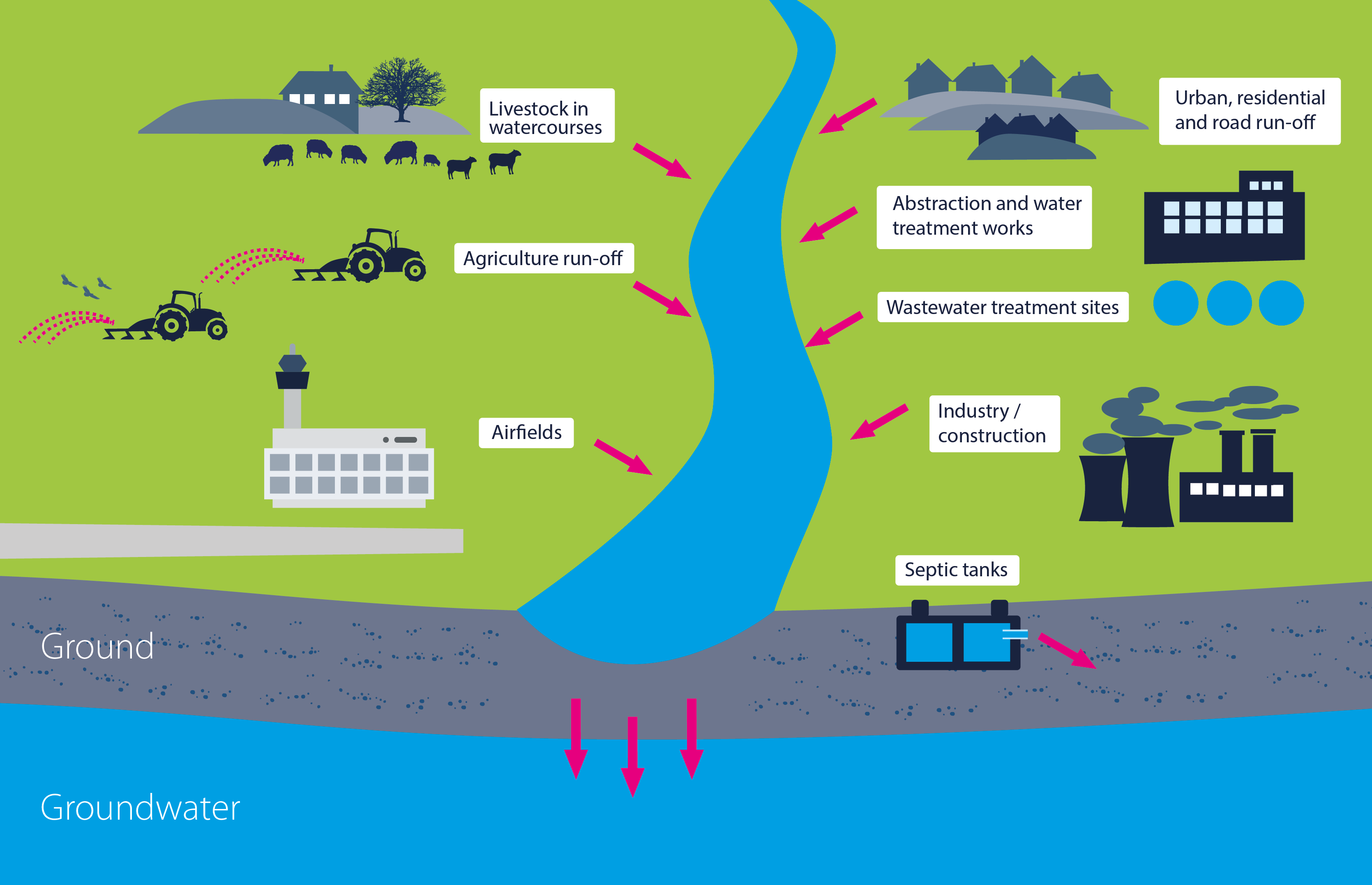Catchment management
Human activity can cause small amounts of pollutants in water bodies which may appear minor whilst on their own, but in combination can play a key role in influencing raw water quality.
A catchment is a defined area of natural landscape that collects precipitation and contributes to a body of water, such as an aquifer or river. A variety of activities can impact water quality. Whether it’s the operation of wastewater treatment plants or the maintenance of household septic tanks, from the chemicals used by factories to the use of fertilisers by homeowners. Some of the possible pollution sources are highlighted in the image below.
 Thus, both industry and the community can be involved in minimising the concentration of pollutants in our raw water. This is why we aim to collaborate with local businesses and communities within catchments to encourage best environmental practice and ensure a supply of high-quality water.
Thus, both industry and the community can be involved in minimising the concentration of pollutants in our raw water. This is why we aim to collaborate with local businesses and communities within catchments to encourage best environmental practice and ensure a supply of high-quality water.
Useful links
A Guide to Best Practice in the Catchment
Read our leaflet on best practice in upholding high-quality water.
Managing septic tanks and sewage treatment plants
Take a look at the UK Government's guidance on managing septic tanks and sewage treatment plants.
Managing heating oil tanks
Find out more about managing heating oil tanks.
Discharges to surface and groundwater
Read the UK Government's guidance on when you need an environmental permit to discharge liquid effluent or wastewater to surface water or the ground.
Pollution events can be reported to us at catchmentmanagement@south-staffs-water.co.uk and through the Environment Agency.

